Pushing the limits of
beam-steering lens arrays
Håkon Jarand Dugstad Johnsen1, Astrid
Aksnes2, Jan Torgersen1
1Department of Mechanical
and Industrial Engineering, NTNU
2Department of Electronic Systems, NTNU
Solar tracking
Tracking integration
Beam-steering
lens arrays
How?
Why?
- No rotation
- Small physical footprint
- Low power, fast, accurate tracking
Old news?
- Johnsen, 2018
- Lin, 2012
What's new?
Improving the
optical performance
Outline
• Objectives
η, θmax, $
• Design method
@numba.njit
def trace_single_ray(surfaces,ray):
for surface in surfaces:
surface_normal = (surfacemodel
.intersect(surface,ray))
aperture.vignett_ray(surface,ray)
...
• Results
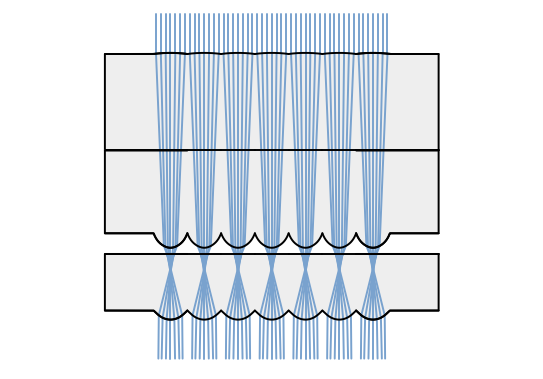
Objectives
• Maximize efficiency
↑ η
• Minimize divergence
↓ θmax
• Minimize cost & complexity
↓ $
Maximize efficiency
Choose an orientation
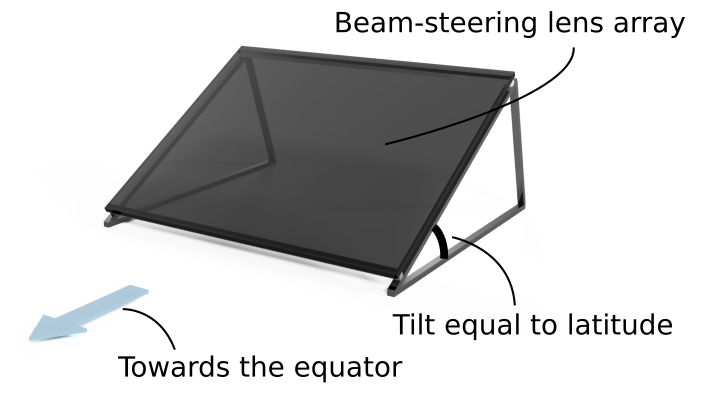
Inspired by Ito et al.
Ito, A., Sato, D. and Yamada, N., “Optical design and demonstration of microtracking CPV
module with bi-convex aspheric lens array,” Opt. Express, OE 26(18), A879–A891 (2018).
Angular distribution of sunlight
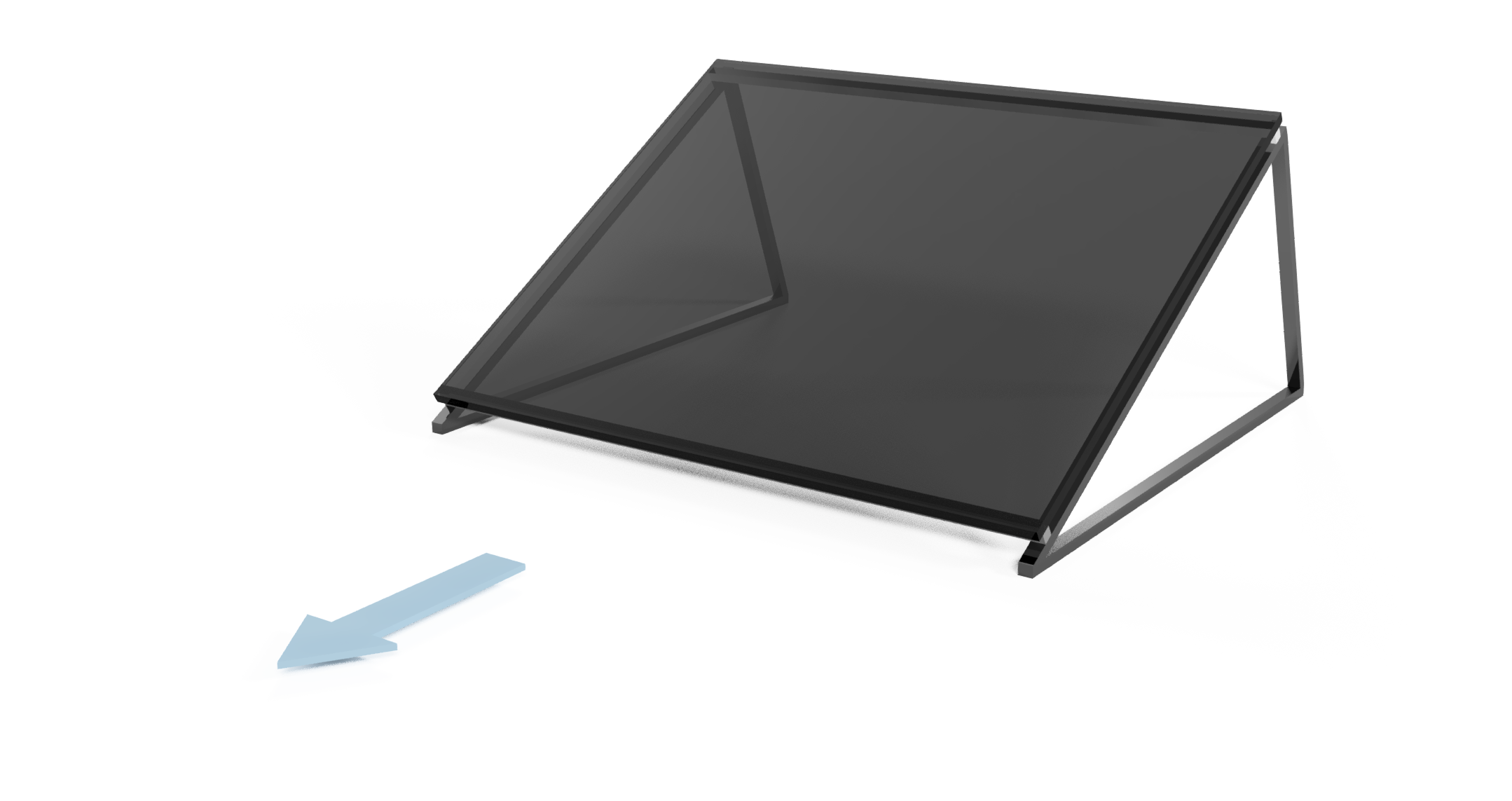
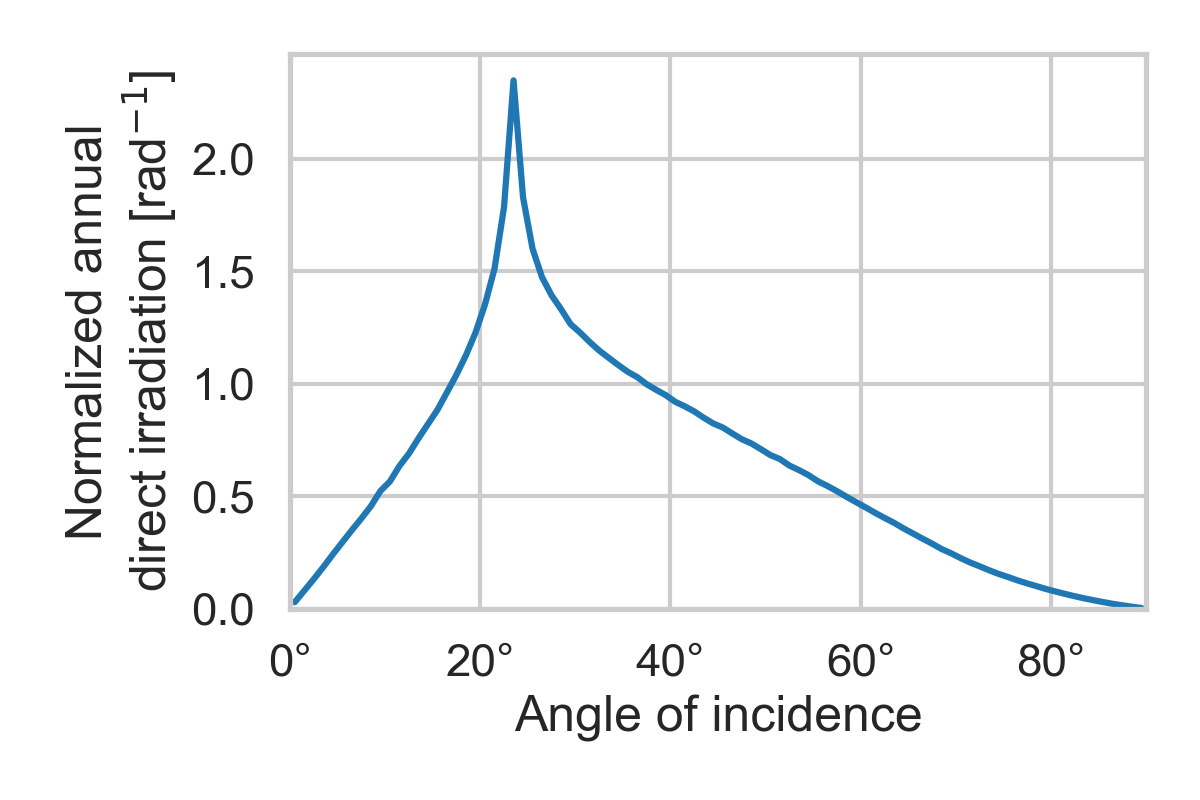
Average yearly efficiency

Objectives
• Maximize average yearly efficiency
↑ η
• Minimize divergence
↓ θmax
• Minimize cost & complexity
↓ $
Minimize divergence
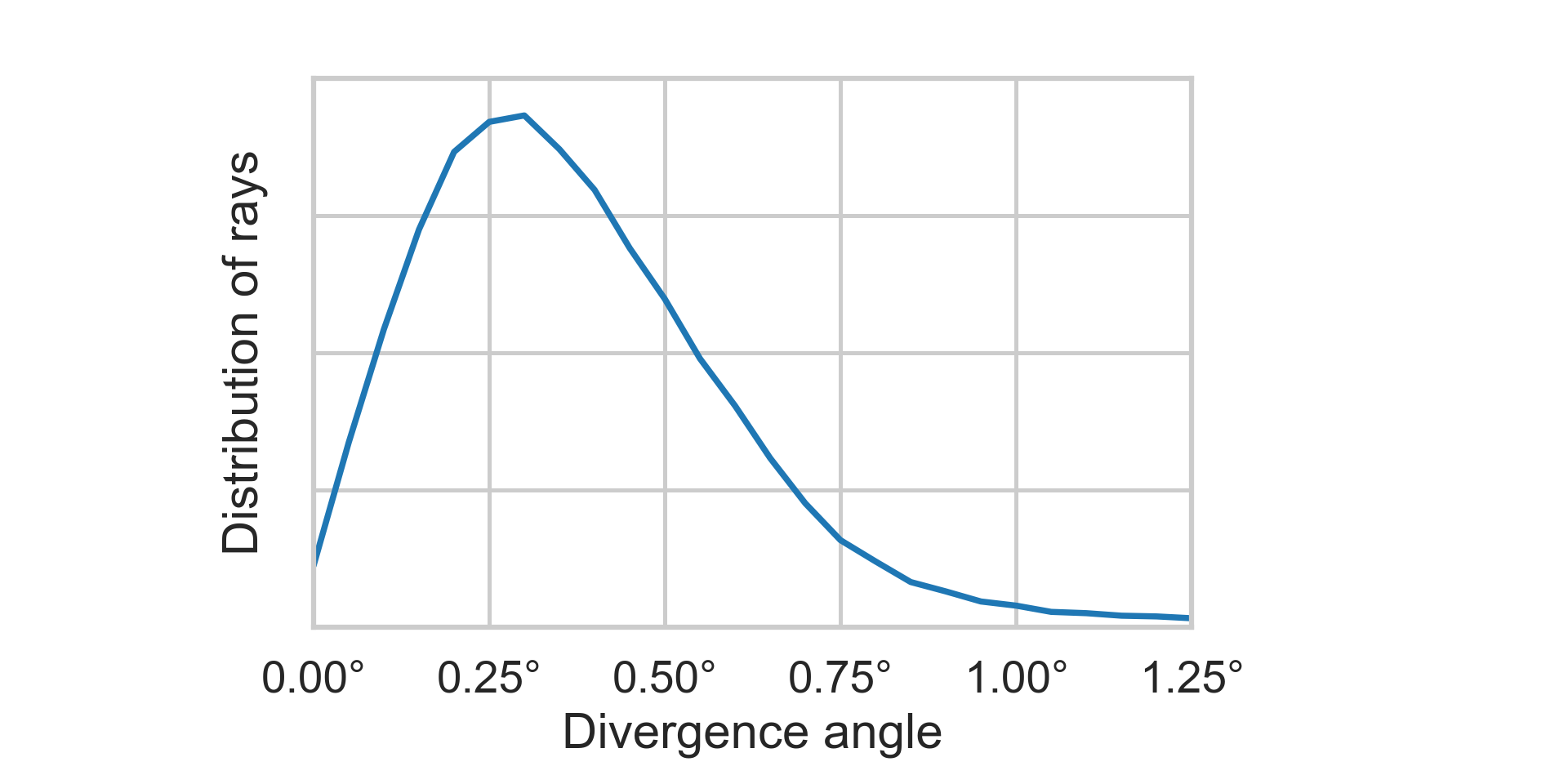
Minimize divergence
Objectives
• Maximize average yearly efficiency
↑ η
• Minimize permitted divergence
↓ θmax
• Minimize cost & complexity
↓ $
Minimize cost & complexity
- Difficult to quantify
- Try a few different configurations:
1
2
3
4
Design method
- Numerical optimization
- Scalarizing by fixing $\theta_{max}$
- Memetic programming
- Ray-tracing simulations
- Custom ray-tracer, Python & Numba
- Material: PMMA
- Google Compute Engine
$$\min\,\mathbf{f}\left(\mathbf{x},\theta_{max}\right)=\left(1-\overline{\eta}\left(\mathbf{x},\theta_{max}\right),\theta_{max}\right)^{T}\\\text{such that}\,\,g_{j}\left(\mathbf{x}\right)\le0,$$
Optimization results
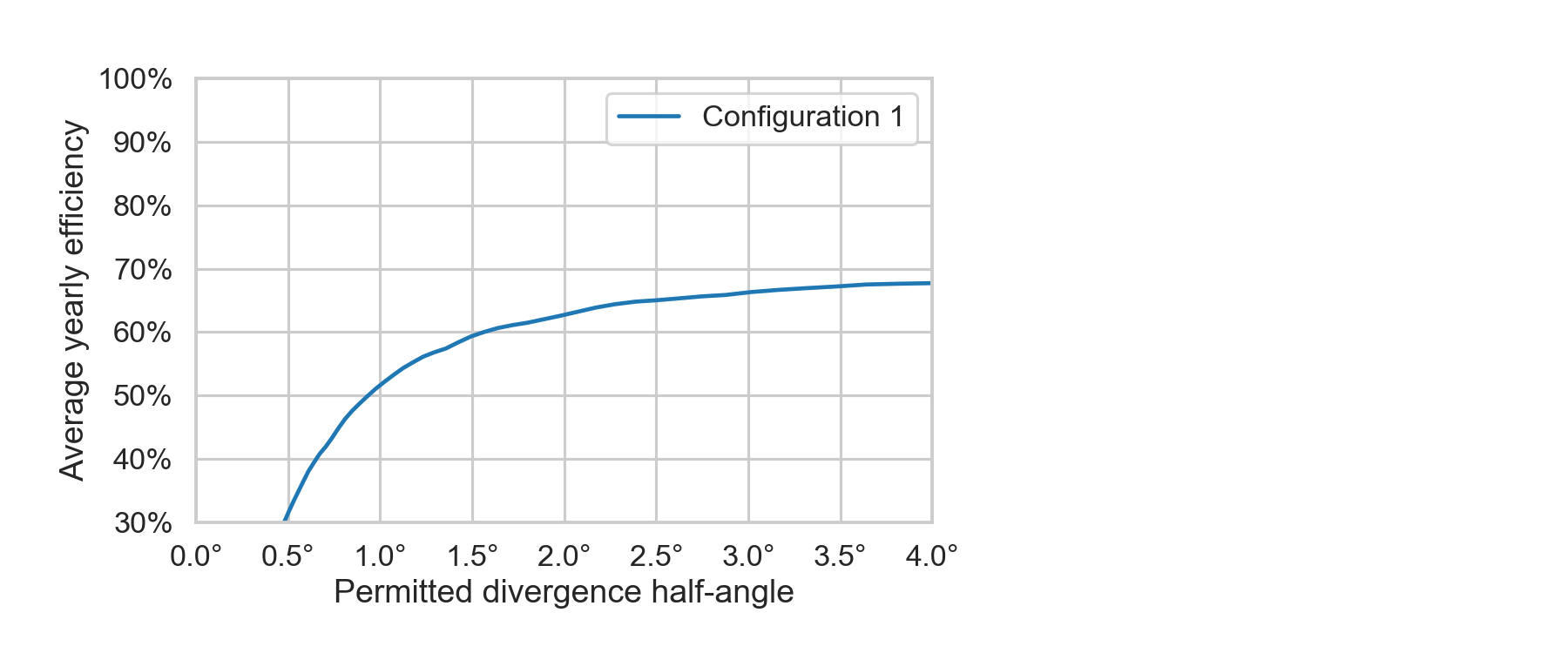
Selected example 1
| Average yearly efficiency: | 74.4% |
| Permitted divergence: | 1° |
| (Concentration limit $\frac{1}{\left(\sin 1^{\circ}\right)^2}$: | ≈3300x) |
Optimization results
Selected example 2
| Average yearly efficiency: | 74.6% |
| Permitted divergence: | 2.2° |
| (Concentration limit $\frac{1}{\left(\sin 2.2^{\circ}\right)^2}$: | ≈680x) |
Benefits
- Reduced physical footprint
- Low-power, high-accuracy, high-speed tracking
Drawbacks
- Cosine projection effect
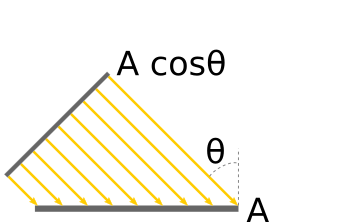
Outlook
- More configurations & orientations
- Alignment tolerances
- New proof-of-concept
Conclusions
- New and promising configurations
- Comparison framework
- Design method
Interested?
hakon.j.d.johnsen@ntnu.no
hakon.j.d.johnsen@ntnu.no
